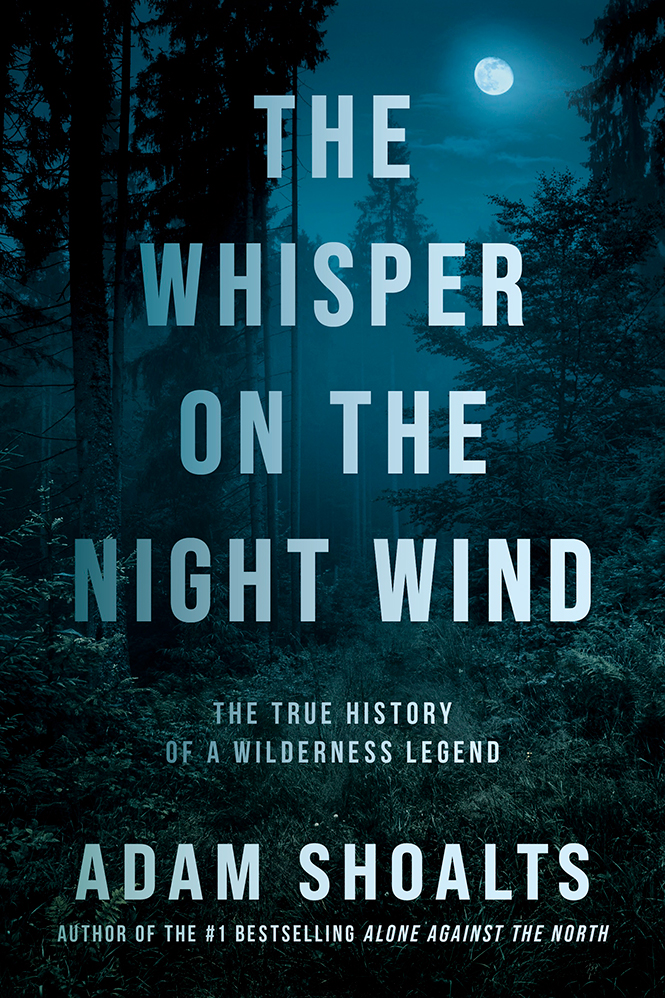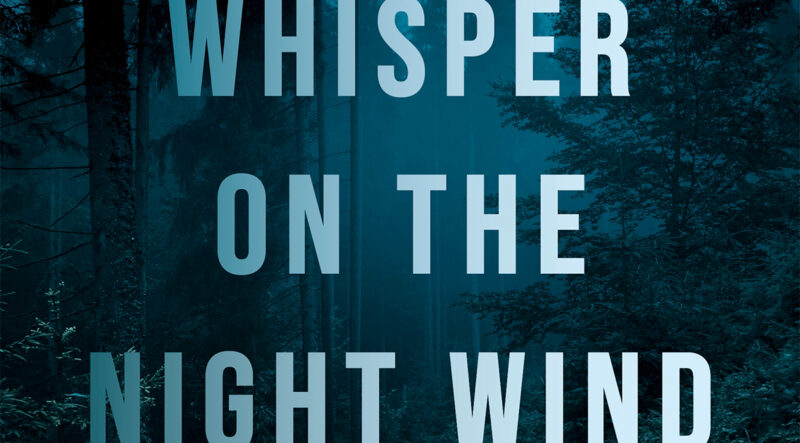
History of a Wilderness Legend
by Adam Shoalts
Allen Lane
Toronto, 2021
5/5
Getting lost in a book is like getting lost in a dense forest. You never know when and where you’re going to get out.
That’s part of the allure of writer-explorer Adam Shoalts’ 2021 book, The Whisper on the Night Wind, as he brings readers along for a good, old-fashioned expedition akin to Sir Edmund Hilary’s pursuit of the Yeti.
In this instance, the mythical creature is the Traverspine Gorilla, a large bipedal beast that was said to stalk the trappers, miners, and Indigenous peoples of the unforgiving Labradorian landscape.
Shoalts takes the reader along for an arduous trek through the forests (and rivers) with his impromptu travel buddy Zach.
Mind you, Labrador is not fit for man nor beast, as the duo travels waist-deep through rivers, canoes diagonally to circumnavigate the unrelenting winds and survives being torn asunder by the trees acting as Edward Scissorhands along their voyage.
But with Shoalts’ survival know-how and Zach’s mixed martial arts background, they’re ready to grapple anything that grins at them the wrong way along the Churchill River into Lake Melville and to their summit of the Mealy Mountains.
When the region was originally settled by a handful of trappers and miners, there were reports of a large beast with a white tuft on its head stalking the scattered families in the region. The Traverspine Gorilla is presented through the anecdotal evidence of anthropologists, explorers and trappers.
Shoalts reads all the lurid details by torchlight in his tent while hearing eerie sounds around him, scaring himself silly with talk of atchens, windigos, loup-garou and two-toed hominid tracks.
It would be easy for skeptics to dismiss the creature as a straying grizzly or polar bear — which are rare east of James Bay and that far south of Labrador, but not unheard of — however, the witnesses involved were trappers. It would be a rather unwinnable argument with a woman of Mrs. Michelin’s stature, as she’s allegedly caught and killed more than a dozen bears in her husband’s snare. (She knows what bear tracks are.)
That’s not to say there isn’t a grounded explanation for what people witnessed in the region up until the early 20th century. Shoalts explores all the evidence and stories and studies of those involved.
And those encounters are presented under his torchlight curiosities; a makeshift Canadian campfire story that makes it a profoundly Canadian tale of the uncanny.
Warranted there are tedious points for those who haven’t picked up a Jon Krakauer or Mick Conefrey book, but the details help illustrate the world he sees — as visually stunning and foreboding as an A.Y. Jackson painting.
That is all part of the adventure. Whenever a group of scientists or explorers set out into the world looking for an elusive critter like Mokele Mbembe or Nessie or the Yeti, they are identifying everything they see, from the lynx tracks in sandy shores to piles of bear “excrement”.
The best part is the banter between a naturalist and fighter that arises from such uncovered evidence: “Bears are freakishly strong, and I think it would just claw the hell out me if I tried anything”. Wise words from Zach.
That banter, introspection, and evaluation of the evidence is how Shoalts comes to his conclusion on what the Traverspine Gorilla is. You’ll have to read it to find out.

